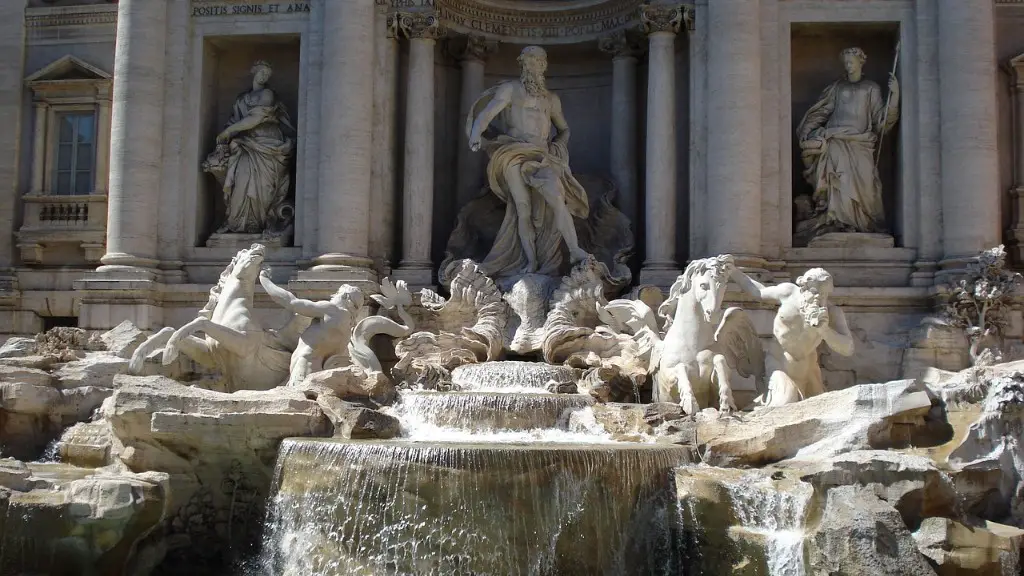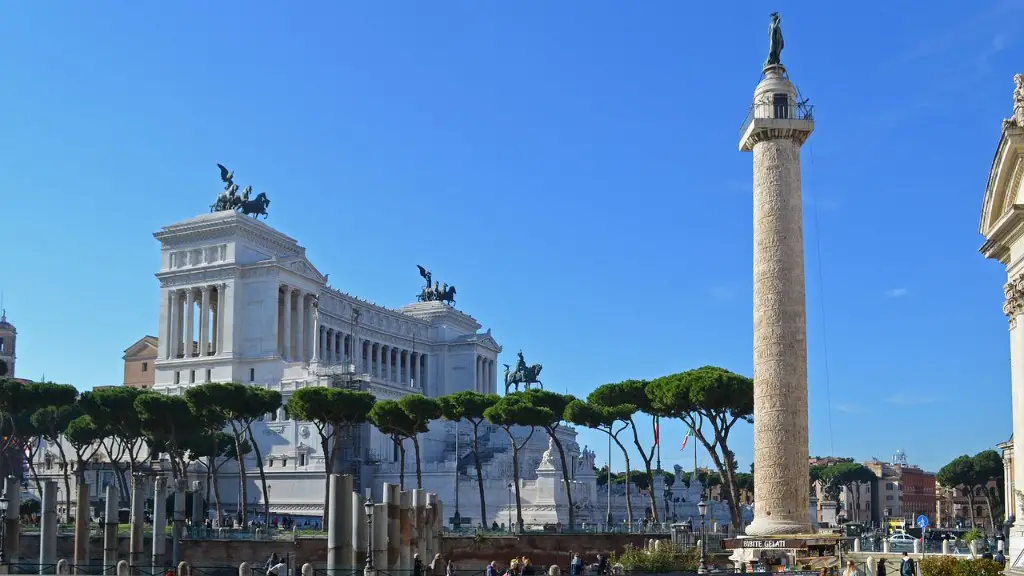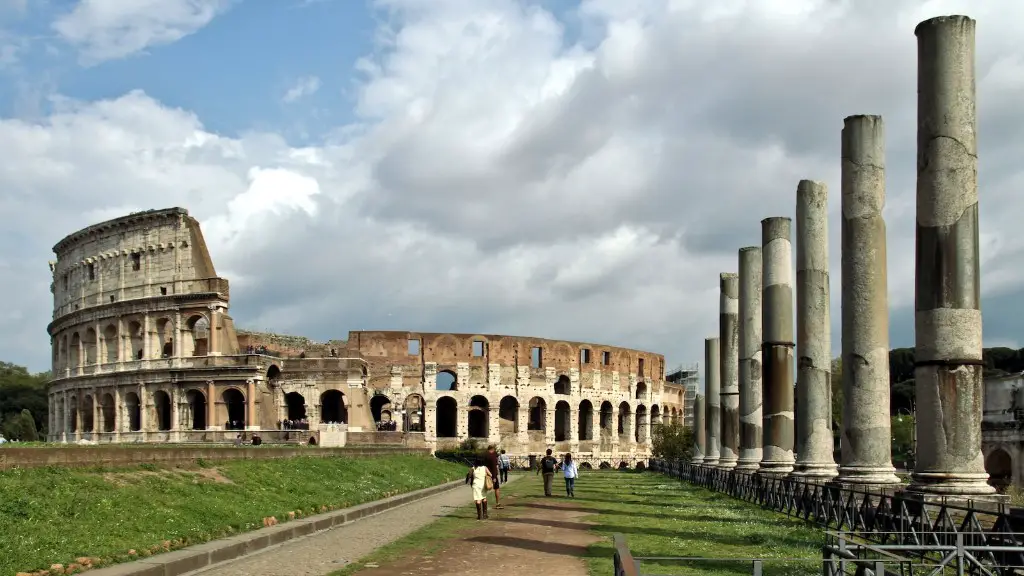A powerful yet complex civilization, ancient Rome has often been cited as one of the greatest historical societies of all time. Its power and wealth, its impact on the western world, and the impressive engineering and architecture of Rome are still evident today, yet many are curious to understand why it faded away. The complete answer to the question of why Ancient Rome fell is multifaceted and still being debated, but there are a few primary causes that have been cited time and time again.
Political Instability is perhaps the most cited cause of Rome’s collapse. Much of the inner turmoil and political turmoil that bubbled up in Rome was a consequence of a few interconnected problems, from economic issues to lack of clear leadership and military defeats. Rome was originally founded as a small city-state in 625 BC and slowly turned into one of the most powerful empires the world had ever seen. Expansion led to a wealth of resources, however, it also exposed Rome to newly acquired cultures. This exposed Rome to a number of different customs and beliefs, leading to frequent social unrest within the empire. Furthermore, the complicated Roman political system, made up of a Republic and later an Empire, was cumbersome and difficult to manage, leading to fatal errors in leadership and eventually, a lack of faith in the government.
Military Losses and Raids led to Rome’s political instability and degenerating power. As other empires rose to power, they wanted to take control of Rome’s wealth and resources. The Punic Wars are a classic example of a larger power warring against Rome. The Punic Wars, fought mainly between Rome and Carthage, spanned more than 120 years, drained Rome’s resources and caused severe injury to its military and political power. Later, Rome clashed with the Goths, a Germanic tribe that invaded Italy in the latter part of the 5th century AD. This led to an alarming period of raids and disruption and Rome was soon unable to protect itself from these powerful new forces.
Socioeconomic Problems were also at the root of Rome’s collapse. Rome had long suffered from large divides in social classes, which increased through its period of expansion. As the ruling class became wealthier, the lower classes experienced economic downturns, leading to a destabilization within the empire. Furthermore, as Rome’s fortunes changed and its citizens felt their grip on power slipping, they invested more and more in military campaigns, draining the empire’s coffers and leading to impoverished conditions that finally reduced Rome to a manageable, if small state.
A combination of expanding resources, military loss, and political infighting all contributed to the fall of the great Roman Empire. Rome’s rapid expansion had left it with weakened borders and a ton of new beliefs and customs, which had destabilized the political system. Simultaneously, as other larger powers became involved, there were numerous military losses that led to further disarray and economic downfall. These economic problems saw the wealthy classes grow wealthier, while the lower classes experienced a huge downturn in their personal fortunes, leading to anger and panic which finally reduced the empire to a manageable state.
The Impact of Christianity in the Decline of Rome
The rise of Christianity during the Roman Empire is often seen as one of the contributing factors of Rome’s downfall. Christianity was a major belief system that was embraced by millions of people within the Roman Empire, and its presence challenged the core beliefs of the party in control. Christianity also provided alternative laws and methods of governance to those of Roman institutions, leading to the eventual adoption of the Christian faith. Despite the strong impact, this is often seen as the result of Rome’s fall rather than the cause, as other elements such as political instability and military defeats weighed heavier on the Roman Empire.
The French Revolution and Its Influence on Rome
The French Revolution is often compared as a parallel to the fall of Rome, and there are many lessons to be learned from its history. Similar to Rome’s demise, the French Revolution was the result of a cocktail of causes such as poor government, societal upheaval, and a heavy reliance on the military. All of these led to a period of chaos and violence, which ultimately resulted in the fall of a great Empire.
Legacy of Ancient Rome
The fall of the Roman Empire was a tragic moment in history, yet its legacy lives on. Its impact on western civilisation is still felt today, with its engineering and architecture still admired. Rome is also credited with laying the foundations of European civil law, with its use of the Latin language, government structure, and artistic forms still visible around the continent.
Hayes veneer of Declining Roman Empire
Although Rome had fallen by the 5th century, it was still seen as a dominant force in the Mediterranean. In an effort to maintain power, the Eastern Roman Empire (Byzantine Empire) continued to survive until the 15th century. By this point, the Roman Empire had become the Byzantine Empire and although their rule was not as strong as it once was, the culture, legacy and legacy of Ancient Rome was still felt. Furthermore, the Byzantine Empire is seen as inheriting and building on many of the previous Roman Empire’s accomplishments, such as architecture and policy.
The Role of Technology in the Decline of Rome
One of the more fascinating aspects of the Roman Empire’s fall was the role technology had to play in their decline. Rome was one of the most advanced societies at the time, having mastered the use of hydraulics, efficient military tactics and other impressive engineering feats. However, these technological advancements came at a cost and the Romans struggled in their later years to keep up with the advances of other societies, especially the Germanic and Islamic Empires. Technological advancement is not solely responsible for Rome’s fall, but it certainly played a key role.
The Collapse of Rome in a Global Context
When discussing the fall of the Roman Empire, it is essential to take into account the global context at the time. During Rome’s decline, Europe was becoming increasingly important in terms of global trade and international power. It was here that new languages and cultures were forming, allowing for new and varied alliances to form. This transformation of the Europe meant that the cities and states of the Roman Empire began to become increasingly isolated and outweighed by these new powers. Rome’s fall can also be linked to the spread of the Gothic, Hun and Vandal tribes across Europe. This invasion of new tribes into Europe resulted in the disruption of many of the city-states of the continent and was a huge contributing factor to the fall of the Roman Empire.


